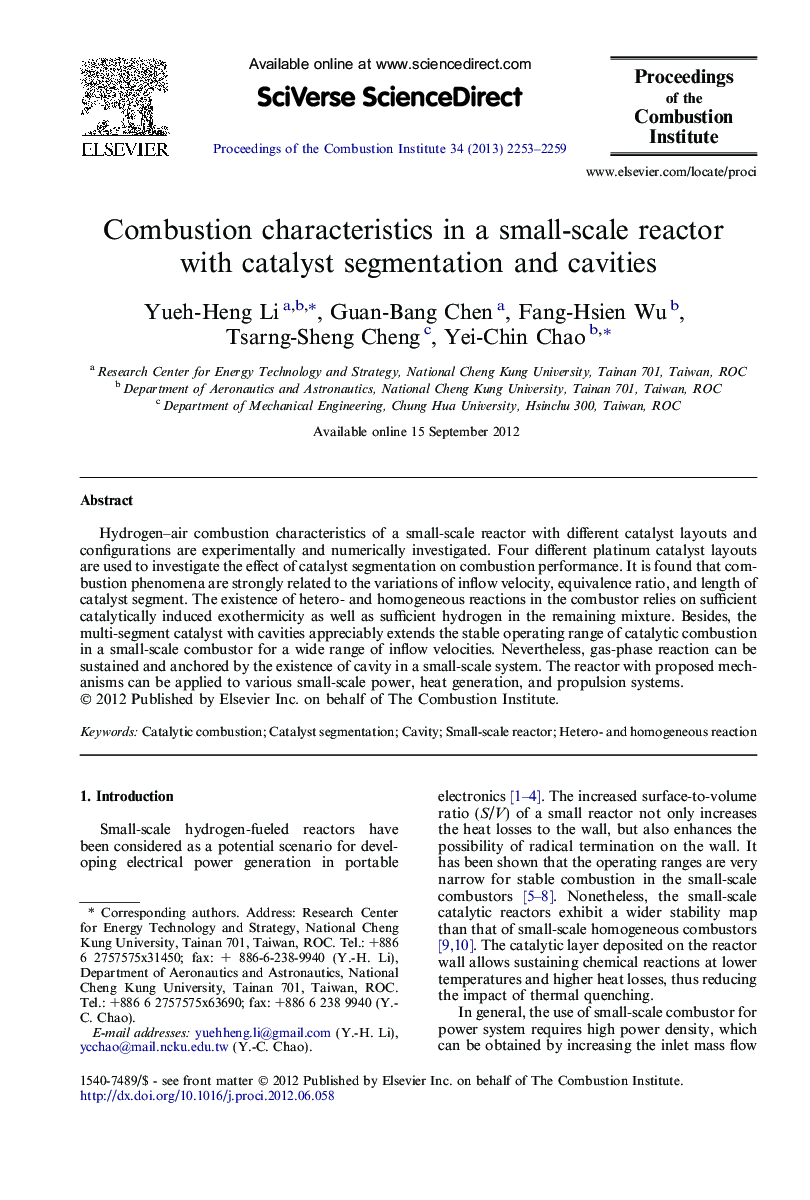| Article ID | Journal | Published Year | Pages | File Type |
|---|---|---|---|---|
| 240850 | Proceedings of the Combustion Institute | 2013 | 7 Pages |
Hydrogen–air combustion characteristics of a small-scale reactor with different catalyst layouts and configurations are experimentally and numerically investigated. Four different platinum catalyst layouts are used to investigate the effect of catalyst segmentation on combustion performance. It is found that combustion phenomena are strongly related to the variations of inflow velocity, equivalence ratio, and length of catalyst segment. The existence of hetero- and homogeneous reactions in the combustor relies on sufficient catalytically induced exothermicity as well as sufficient hydrogen in the remaining mixture. Besides, the multi-segment catalyst with cavities appreciably extends the stable operating range of catalytic combustion in a small-scale combustor for a wide range of inflow velocities. Nevertheless, gas-phase reaction can be sustained and anchored by the existence of cavity in a small-scale system. The reactor with proposed mechanisms can be applied to various small-scale power, heat generation, and propulsion systems.
